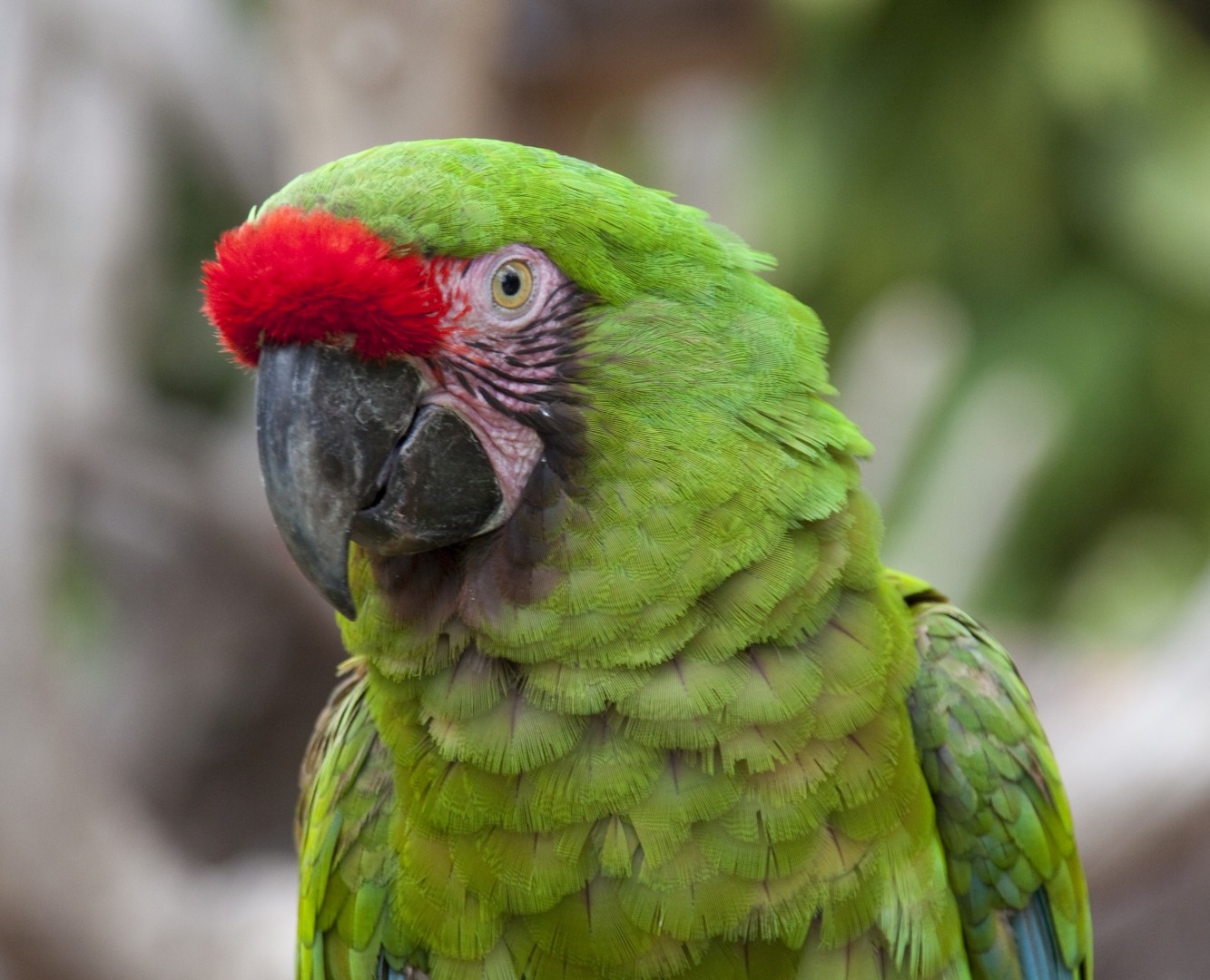Military Macaw
A species of Typical Macaws Scientific name : Ara militaris Genus : Typical Macaws
Military Macaw, A species of Typical Macaws
Botanical name: Ara militaris
Genus: Typical Macaws
Content
Description People often ask General Info
Description
The military macaw is 70 to 85 centimeters (27.5 to 33.5 inches) long on average, and 99–110 (33–43 in) across the wings. Military macaws are mostly green with light blue and yellow flight and tail feathers and a bright red patch on their forehead. Their face is bare and white in color with black striations. The large strong beak is grey-black and the iris is yellow. They greatly resemble great green macaws and are usually distinguished from great green macaws by their smaller size, completely black bill, and overall darker color. They can also be separated by differences in vocalization and the tendency for great green macaws to be a humid forest species while military macaws are usually a deciduous forest species. Phylogenetic studies have shown that the two species are sister clades. 
Size
71 cm
Colors
Green
Yellow
Red
White
Blue
Life Expectancy
60 years
Nest Placement
Cavity
Feeding Habits
Military Macaw forage at dawn in flocks, eating seeds, fruits, leaves, and clay from licks for detoxification and salt. They have a selective diet, consuming specific plants and using Tillandsia grandis for water.
Habitat
Military Macaw's habitat includes tropical deciduous and semi-deciduous forests, and dry montane evergreen forests. They thrive in areas with large canopy trees at elevations of 600-2600 m, often in regions with pine-oak formations. Seasonal movements may lead them to humid lowlands and thorny woodlands. Key features of their habitat are the presence of suitable cliff roosts and nesting sites.
Dite type
Frugivorous
People often ask
General Info
Feeding Habits
Bird food type

Fruit
Behavior
Military macaws live in large flocks and can live about 50–60 years in the wild. They can often be heard long before they are seen. They are a very noisy bird making a variety of loud cracking and shrieking sounds, including a loud kraa-aak. Military macaw activity has been observed most frequently in the morning and the evening meaning they are most likely a crepuscular species. 
Distribution Area
Military macaws typically inhabit tropical deciduous and semi-deciduous forests. They are a canopy species because they require large canopy trees of deciduous and subdeciduous forests for feeding, breeding, and nesting behavior. They also use canopy trees for protection from predators and heat. They typically live at elevations of 600 to 2600 m, higher in the mountains than most macaws ever range. However, these macaws may seasonally fly down to lowlands, where they are likely in humid forests and thorny woodlands. They will nest in the tops of trees and more often in cliff-faces over 600 ft. (200 m) above the ground. The three subspecies of the military macaw are distinguished geographically. A. m. militaris are found in areas of Bolivia, Peru, Ecuador, Colombia, and Venezuela. A. m. mexicana occupy areas in Mexico and A. m. boliviana live in Bolivia and Argentina. The military macaw has escaped or been deliberately released in to Florida, USA, but there is no evidence that the population is breeding and may only persist due to continuing releases or escapes. 
Species Status
Military macaws are estimated to only have a breeding population of 2000-7000 individuals and is continuing to decrease. According to the ICUN red list, military macaws are listed a vulnerable as they face threats from habitat loss due to crops, deforestation, mining, and roads, with already extremely fragmented populations. A 2013 paper found that the habitat for populations in tropical dry forests has been reduced by almost 32%. Military macaws are listed as CITES (Convention on International Trade in Endangered Species of Wild Fauna and Flora) Appendix 1 to prevent the capture and trade of the species. Despite this, research shows that the trafficking of parrots form South America to North America is still common. Their narrow diet is also of concern. If the environment were to take a hit and they lost access to too many of their diet species, the species could be greatly affected. There is promise however in that they have a less narrow diet during certain times of the year showing that they may have the ability to adapt if they did lose their typical diet species. Another conservation concern may be genetic diversity. Military macaws actually have moderate genetic diversity despite their small population, which points to a large ancestral population. Though they have moderate genetic diversity, they are still risk of population bottlenecks due to habitat fragmentation and inbreeding. 
Scientific Classification
Phylum
Chordates Class
Birds Order
Parrots Family
Parrots Genus
Typical Macaws Species
Military Macaw 